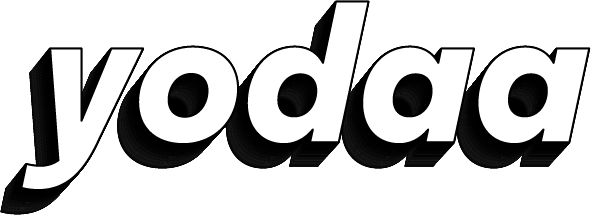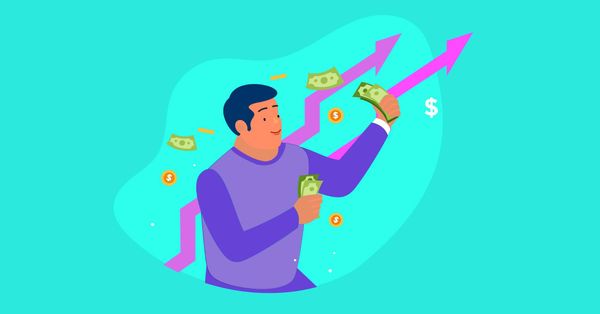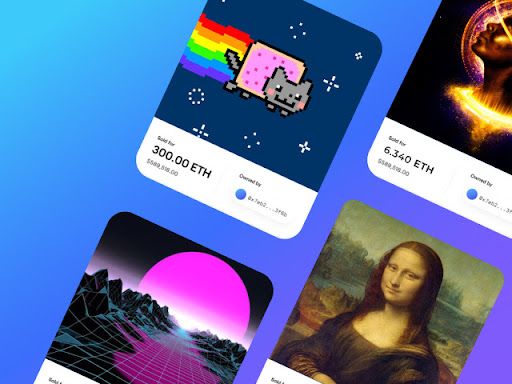The Story of Money — Past, Present, and Future
Humans are the only creatures that use money. Animals, birds, insects, fishes, and plants exist together in the world without it. Yet, while every human spends money, very few understand it. We figured it's time to change that
The concept of money has been around for a long time, even though it has advanced to its current form much more recently.
The Past: Barter and commodities
Researchers claim that as far back as 40,000 years ago, groups of hunters were known to trade flint weapons and tools with each other. If you lived before money was around, your only option to get something someone else made was to offer to trade with something you made.
As people started making things of different values, this obviously got complicated. Instead of saying a loaf of bread is worth a dollar, for example, a baker had to remember that it could be traded for 2 bottles of milk or half a jar of honey.
Like we said, complicated.
The first instance of 'modern' money would come thousands of years later, with the Mesopotamian shekel — which served as a convenient measure of weight among traders nearly 5,000 years ago — used to record a fixed store of value
#DYK the Shekel is still a currency today?
In its modern avatar, money still serves as a 'store of value' and a 'medium of exchange'.
It helps that the currency of every country is officially declared by governments as 'legal tender'. Don't worry, we'll unpack these terms.
Over time 'commodities' started to gain popularity as 'mediums of exchange'.
Take salt. Everyone uses it. It is easy to carry around and divide into required quantities. Let's say a loaf of bread is worth half a kilo of salt and call it a day.
As long as this equation between salt and everything it can be traded for (the 'exchange rate') remains stable, salt is a perfectly usable 'medium of exchange'. If you sell something, the buyer just pays you its worth in salt.
Salt is now a 'store of value'. Neat huh?
As societies progressed, people realised any scarce resource that occurs naturally and whose circulation could be controlled, can be used as a store and exchange of value.
Soon, shells of cowry and mother of pearl became popular among trade routes along the Indian Ocean. These shells had distinctive patterns that were difficult to counterfeit, and their value was determined by how far from their origin (usually near Maldives in the Indian Ocean) they had been transported.
Supply and demand were taking shape.
Around 3,000 years ago, these shells became popular for monetary exchange in China, with some emperors even being buried with a shell in their mouths.
China would also go on to make other big contributions in the story of money.
But we'll come back to that later…
In time, many such commodities played the role money plays today, and metals like gold and silver became preferred.
Side note: You can still trade oil, gold, and other commodities that have a known exchange rate to their replacement - money. As fixed commodities grew popular to store and exchange value, empires prospered.
Over time, currencies were created to make it easy for rulers to 'tax' citizens. These were linked to a specific quantity of an underlying commodity. The Roman empire took cues from other cultures and began to use coins made of precious metals as currency.
Emperors made sure to have their likeness imprinted on coins to remind citizens who was in power. These coins were usually made of the amount of metal they were meant to denote, but over time, emperors began 'debasing' coins, slowly reducing the amount of metal, making coins in circulation thinner, lighter, and over time, worthless.
The debasement was done to manage the dwindling supply of metal (coins were leaving Rome as traders carried them back to their homelands) while still allowing the empire to have enough coins to spend for its own needs. With the Empire producing more money than the underlying commodity supported, more money was available in the economy than goods being produced, causing prices of goods to go up. Demand vs supply.
Inflation.
We'll come back to that too. After we go back to China.
China was the original pioneer of papermaking, and during the Tang dynasty in the year 800, paper certificates began to be issued by the government to merchants in far reaches of the kingdom, as a proxy to metal money stored in the capital.
During the subsequent Song Dynasty, wealthy financiers began issuing certificates of their own, and paper money became popular.
Venetian merchant explorer Marco Polo witnessed this system when he visited China in the 13th Century. Fascinated, he wrote about it extensively
Now, let's talk banks.
As nations prospered, more people realised it didn't make sense to carry so many coins around all the time. Banks solved this problem by storing coins for people and issuing them receipts in the form of bank notes.
Over time, like our Chinese merchants, people started trading notes instead of giving bags of gold during a purchase.
Banks would handle physical transfer of coins from the buyer's bank to the seller's. All was good until banks realised they could use the idle funds.
Since it was safe to assume all a bank's clients would not withdraw all their money in one go, banks started issuing more notes than they had actual coins for.
So long as they could return coins to any clients who asked, this system worked. Empires became countries, and countries adopted currencies.
The Present: Fiat money
The underlying commodity for most currencies was gold. Countries agreed that the price of their currencies would be linked to a fixed quantity of gold.
ℹ That's how the term 'gold standard' came about.
As Governments and banks got more confident, *central banks* were born. Now, only bank notes issued by central banks would be considered legal.
In this new world, all banks would hand over their coins to the central bank, which would hold them and issue notes. These notes would be legally recognised as the store of value and medium of exchange in the country.
Money as we know it today, is born.
Remember how we illustrated our earlier example by anchoring the price of commodities to salt?
Over time, the prices of many currencies became anchored to the US Dollar, which in turn was kept in check by the gold standard.
Until Aug 15, 1971
As the amount of gold on Earth is finite, and every dollar accounts for some of that gold, only a finite number of dollars could ever be created. This system would preserve the value of the dollar, and 1 dollar could fetch similar amounts of bread over time.
In discarding the gold standard and controlling legal tender through central banks, governments had removed the underpinning of currency from gold, a finite element, to a promise by the government.
ℹ This is what is known as 'fiat' money. The notes we use today.
With no gold standard limiting how many notes they can issue, central banks are free to print more notes when the need arises and the government or people need money.
A pandemic, for example.
As the amount of money in circulation increases disproportionately to the output of the economy (like bread loaves the baker produces), the 'value' of money starts to decrease with time.
As more notes are printed and money in circulation grows, the baker starts asking more of it for the same loaf of bread. Your money is now worth less, as it can now buy less than it could before.
Welcome back to inflation.
The future (?): Crypto and digital money
Inflation is an unfortunate side effect of the way money works today. Your money will continuously lose value, and so it becomes important to invest it and create returns that are higher than inflation. If you leave it in the bank, you become poorer every day.
This is why cryptocurrencies like Bitcoin, which use the blockchain for trust (the role the central bank seeks to play today) and algorithms that limit production (the gold standard) are gaining popularity among people who fear the impact of unchecked money printing.
And that's the journey of money to what we know it as today.
Maybe the future will be powered by cryptocurrencies, which seek to replicate a lot of the characteristics of money in the pre-fiat age, maybe it'll be something yet to be imagined.
Regardless of how it plays out, as a society, we'll still need a stable store of value and medium of exchange that is easily divisible and frictionless to store and transport.
How do you think money will work in the future? Join our Discord server and let us know what you think.
Yodaa is a smart money app and card for the entire family. Join the club of the smartest financially empowered teens in India and SE Asia. Get Yodaa today.



